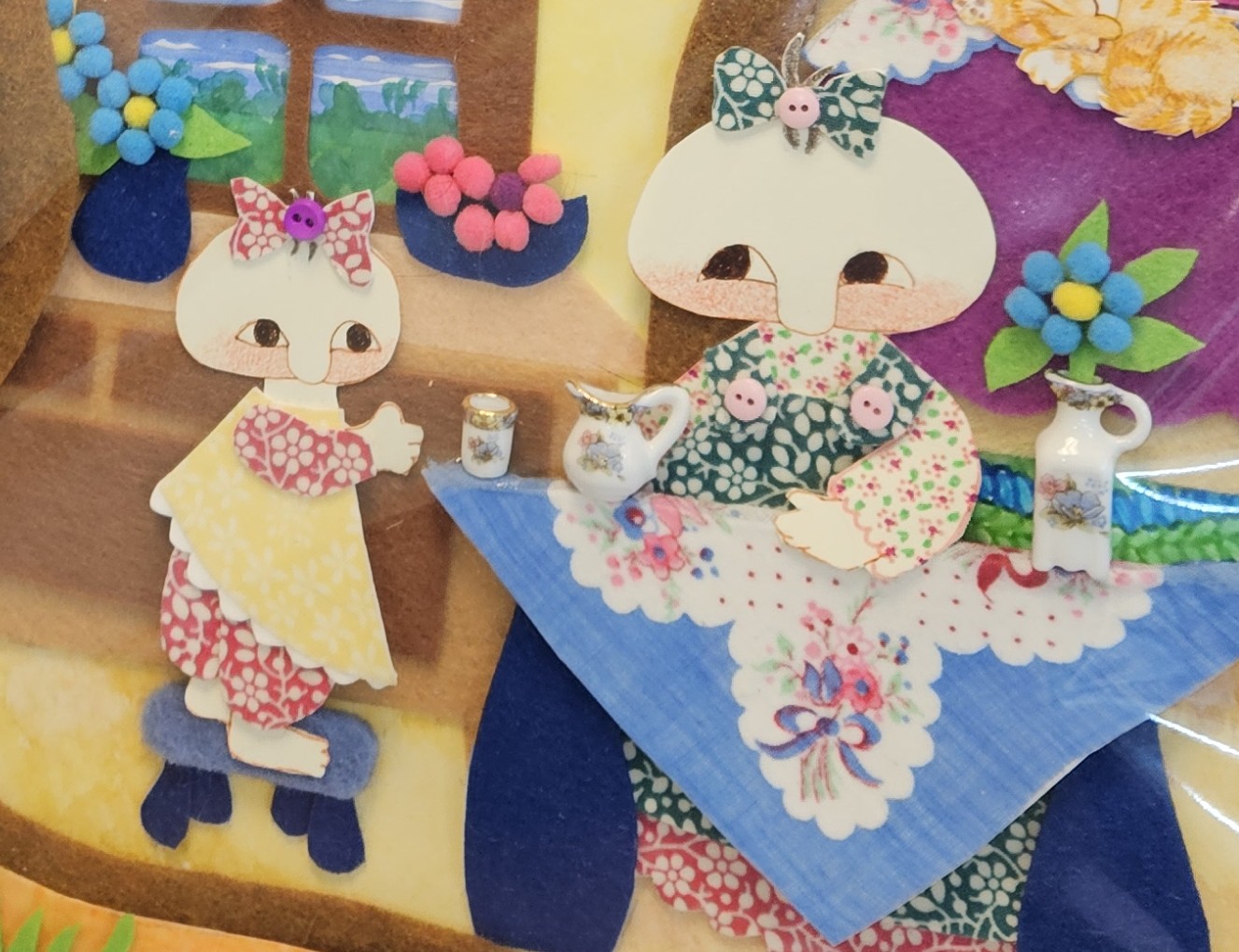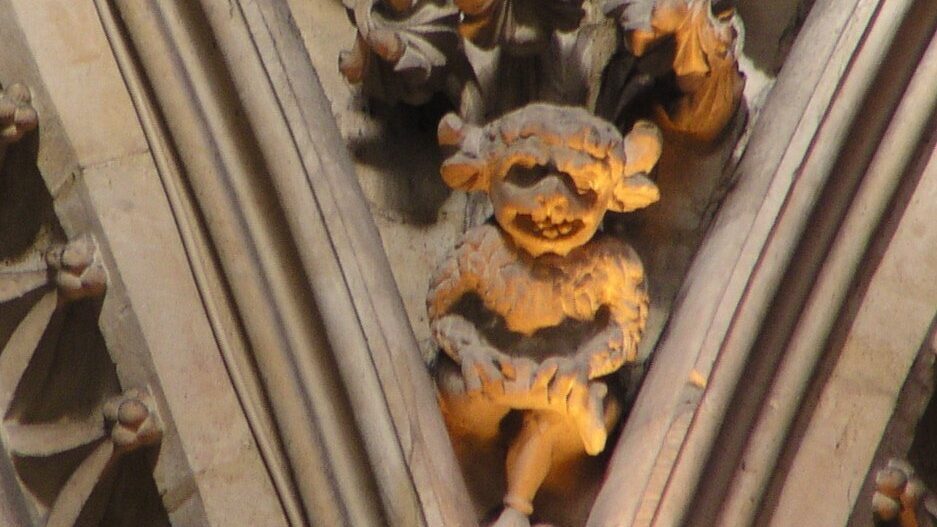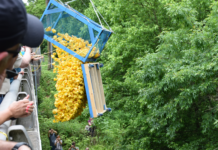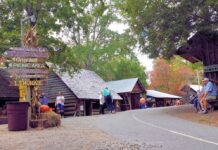
Here’s a trivia question for you: what do these pieces of art have in common?
First, a prehistoric tribal petroglyph found on the banks of the Columbia River in Washington state. Second, a World War 2 comic figure that managed to show up just ahead of every Allied army advance. And third, a grotesque stone figure inside one of the Gothic arches of Britain’s magnificent Lincoln Cathedral.
The answer is all of them have “neep-like” qualities, which is a phrase you will not see in any art history text.
Neep-like creatures throughout history
The petroglyphs/pictographs are believed to be dream figures that boys painted or carved onto stones as part of their initiation into manhood. The most famous of the remaining figures in the Columbia River Gorge is called “She Who Watches” (Tsagiglalal in tribal dialect). It is a face with prominent eyes that watch over the Columbia River. She definitely has Neep-like eyes. And every World War II Allied soldier knew to look for a “Kilroy Was Here” sign chalked on a wall at some unexpected locale just ahead of the advancing Allied troops. Two eyes and a long nose drawn with a single brow line hanging over another horizontal line made a Kilroy. Nobody knew who drew him or why, but he was always there.
Looking back a thousand years, another Neep-like figure appeared, carved into the Gothic arches inside Lincoln Cathedral in central England. Again, the same single line creates the eyes and nose, except in the cathedral, the anonymous carver made the figure into an “imp,” a fanged trickster who planned mischief against the worshipers. He’s been hanging around the cathedral ceiling, apparently since the 11th Century, serving no known purpose. In modern times, he was revived as a souvenir figure, making the church and re-creator a good deal of income.

Jan Walker’s Neeps
Perhaps the Neeps of Cornelia will do the same someday if we can wait a few centuries. In the meantime, we know that Neeps have a surprisingly extended history, although Jan Walker wasn’t thinking of that when she doodled the first little figure onto a knee. What we do know is that humans have a long, and probably unconscious, history with such imaginary folks.
When Jan Walker drew her first Neep in 1984 on the knee of Derek Stapleton, she was just having a bit of fun. She was drawing shoes onto the bare feet of little kids, and she really had no grand design in mind. But Jan thought the knees above the feet needed a little attention, so she conjured up a figure that she called “a Knee Neep.”
More than 40 years later, Jan is still doodling her “Neeps” onto colorful backgrounds and filling books with stories and poems about the imaginary world she created for her imaginary creatures, reportedly living near Cornelia’s Tower Mountain. She bears a Neep design on her own knee, tattooed in color no less.
So what exactly is a neep? In the old Gaelic language of Scotland, a neep is a turnip, specifically a rutabaga. It is usually served mashed up, as a side dish along with such other Scottish delectables as haggis (stuffed sheep intestines) or tatties (potatoes). Purportedly, it has a flavor that is “sweet and earthy.”

Did Walker’s Scottish roots bring out her inner psychological neeps?
Knee Neeps
“Knee Neeps” strike most adults as rather silly creatures, which is understandable. Jan developed her little friends to delight very young children, not cynical adults. However, Neeps have a surprising depth in our culture, and perhaps in human history. If there is a direct connection with much earlier figures, it wasn’t part of Walker’s conscious thoughts, but she is pleased to learn of them. And the neeps could have snuck into Jan’s imagination during some of her life adventures.
In her early years, Jan was a wanderer, first in Europe, then Australia and Tasmania, before traveling with friends through India and the Middle East on her way to England and Scotland. She is one of the few people I’ve met who has walked through the infamous Khyber Pass in Afghanistan, although most Americans today have no recollection of the place where the British Empire suffered one it’s worst defeats.
One of her traveling companions out of Australia was a charming Scottish lad named Peter, who later became her husband. The young marrieds ended up in Texas, before they purchased their first and only home in Cornelia, Georgia, where Jan stumbled into her life’s passion of teaching art to young children. It has kept her going through the decades, helping her through the death of her beloved Peter and providing her wonderful friendships with many, many children who will never forget their classes with Miss Jan.

80 years old and still going strong
Now on the far side of her 80th year, Jan has no interest in retiring. She considers herself at “the top of her game,” creatively speaking. More Neep books are planned and prepped, art classes are scheduled, and more fun words, such as “Defloptuous Tree” and “Lake Biggledeewoe,” are pushing out of Jan’s pens.
Who knows? Perhaps someday, visitors to Cornelia will be greeted by a Knee Neep instead of a concrete apple. Habersham apples have become rather scarce in the county, but some type of Neep seems to thrive wherever children are allowed to dream.











